





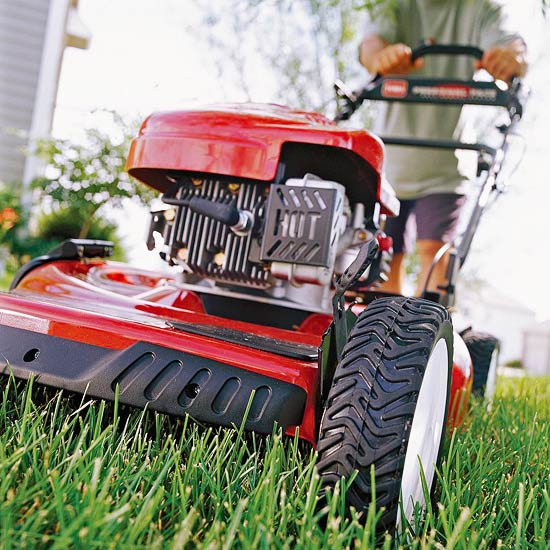
The secret to a care-free lawn that requires less water, fertilizer, and mowing is all at the roots. Work on improving the soil by aerating and using organic-base fertilizers, and your grass roots will dig deep to find their own water and nutrients.
Get a mulching mower. Leaving the grass clippings on the lawn not only saves you the time of gathering and dumping bags of cut grass, but it also returns nitrogen to the soil so you won't have to fertilize as often.
Put in a ground-level edging surface. A landscape timber or curb at the same level as the lawn means you can set one wheel of the mower on the curb and edge the lawn at the same time that you're mowing.
Make a high cut. The crew cut is outdated. The type of grass you grow determines how high you can set the mower, but most lawns can be allowed to grow 2-3 inches tall before removing the top one-third of the blades. Longer grass shades the roots and has more leaf surface for making food, so you will water, feed, and mow less often.
Hire it out. If mowing the lawn is a job you hate, hire someone else to do it so you can use your gardening time to plant perennials, harvest vegetables, or just smell your roses.
continue reading below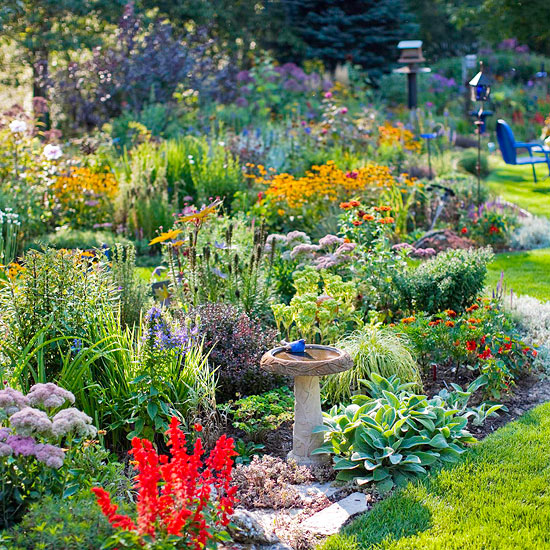
To save tending time and still enjoy beautiful flowers, be picky about what you grow. Dwarf, compact varieties don't need staking, and flowers such as coreopsis, euphorbia, and hellebore, which have long bloom seasons, give more return on your energy investment.
Choose annuals that don't require dead-heading or the removal of faded flowers to keep them blooming. Examples include lobelia, impatiens, and fibrous begonias.
Place stiff, bulky plants in front of tall, floppy ones so you won't have to stake. Use a mounded shrub of potentilla in front of hollyhocks or upright marigolds to support tall snapdragons.
Set your bulbs in plastic pots and rotate them in and out of your larger planters. This way, when bulbs are done blooming, replacing them with summer annuals is a quick and easy job.
Don't dig up and store your tender bulbs of glads, dahlias, and cannas. Try covering them with a tarp and a 6-inch mulch of leaves instead. This insulation will keep the moisture from rotting and the cold from freezing your tropical bulbs. In the spring, just roll back the protective tarp and watch for new growth.
Help your plants grow their best by learning about your soil with a soil test.
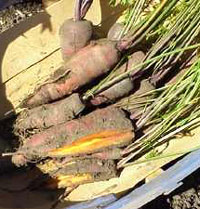
You don't need to hire a farmhand to tend the edibles. Grow the things your family most likes to eat and they'll be more eager to help with the harvest. Mix your vegetables into your flowerbeds or put some in pots with the flowers. This way they'll be more conveniently located and easier to tend.
Grow rhubarb, asparagus, and perennial herbs. All are edibles that don't have to be replanted each year.
Raise the beds, lower the maintenance. Raised beds warm up sooner in spring, and you can sit on the edge to plant and harvest.
Plant more vegetables in less space. A compact vegetable garden will take less time to plant and harvest.
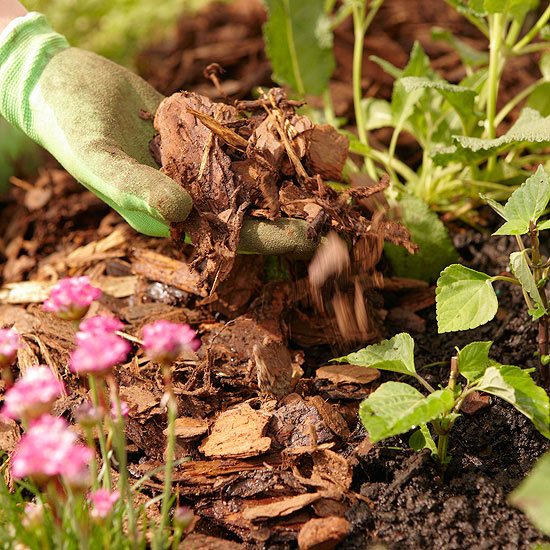
Great soil will cut back on maintenance, so improving it with compost and other forms of organic matter is the secret to independent plants. Not only does highly organic soil hold more water and nutrients, but it will support healthier plants and fewer weeds.
Cut back on fertilizing time with a slow-release plant food. These pelleted fertilizers you mix into the soil release nutrients all season long. You can even buy potting soil with the slow-release plant food already added.
Mulch, mulch, mulch. Covering the soil with an organic mulch of compost or bark chips feeds the soil, seals in moisture, and blocks out weeds.
Learn more about how to use landscaping mulch in the garden.
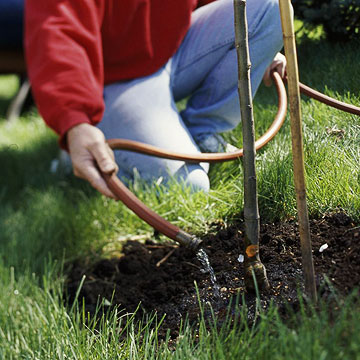
Water less often, but for longer periods of time. A deep soaking once a week is better for your plants than frequent shallow drinks. Thorough soakings encourage deep roots, which means you'll water less as the summer wears on.
Use a decorative sprinkler you can leave out on the lawn all summer. A hose holder that reels in the excess hose is also a handy way to keep things tidy.
Choose drip-irrigation and soaker hoses; they're the most efficient ways to water. If you don't have an automatic sprinkler system, consider this investment in timesaving convenience.
Make wood chips out of fallen branches with a shredder/chipper. Use the chips on top of newspaper or cardboard as natural-looking weed-blocking material for your pathways.
Behead the weeds instead of pulling them. A sharp hoe or string trimmer can slice off the weeds at ground level. Decapitate the weeds on a sunny day, and the roots will dry up as well.
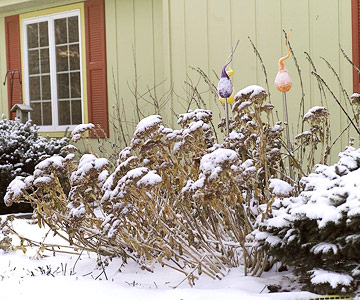
Winter
Study the winter bones of the garden, then invest in birdbaths, sundials, and othergarden art as focal points. Not only are those nonliving garden accents maintenance-free, but they add structure to the winter garden.
Don't drag out the ladder for winter pruning. Invest in a long-handle pruning pole and keep your feet on the ground.
Spring
Look for seedlings that have volunteered from self-sowing perennials or annuals. Reward their independent spirit by replanting them so they will spread to other parts of the garden.
Plant dwarf evergreen shrubs that grow slowly and stay tidy to avoid summer pruning and staking.
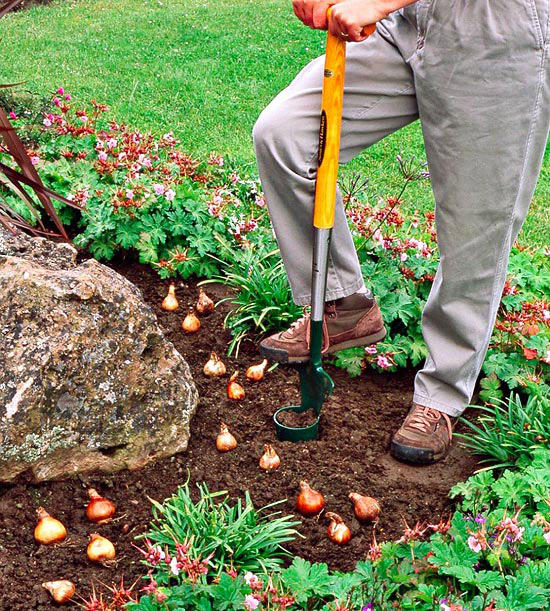
Summer
Replace patches of lawn that won't stay green in the heat of the summer with a boulder-and-rock mulch, or a drought-resistant groundcover.
Add a watering wand with an on/off switch to the end of your hose. This tool makes quick work of watering pots and baskets.
Fall
Plant bulbs that will return on their own. Dwarf daffodils and short tulips come back more dependably and won't blow over onto their bellies during spring rainstorms. Quick Tip: To plant a lot of bulbs, dig large communal holes. Pitch in a dozen or more bulbs and cover them all up at once.
Don't toss or burn fallen leaves. Rake or blow them all into a pile in a corner of the yard. Cover with a net. In the spring, use the decomposing leaves as a mulch around plants or till them into the garden soil.
Spread bird netting under your trees with falling foliage. After the leaves have dropped, gather up the corners of the net and drag away the leaf pile.
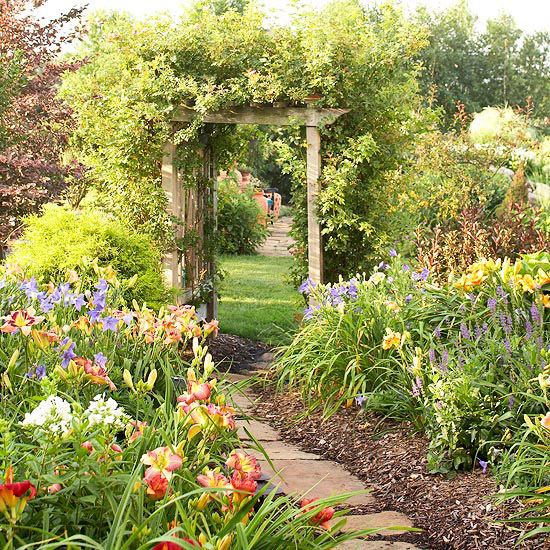
Copyright © www.100flowers.win Botanic Garden All Rights Reserved